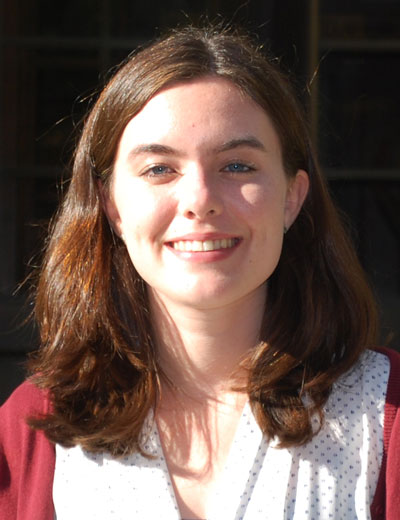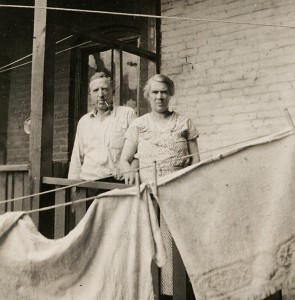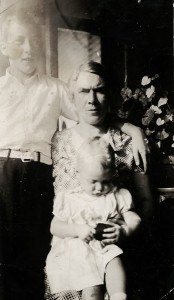When I first began working on my genealogy, I quickly had aunts and uncles setting me to work on brick walls that had stumped them for decades. Overwhelmed by distant dates and unfamiliar names, I instead began with what seemed to me the simplest place to start: my maternal grandparents, Mary Deane and Walter Griffin.
I lived just a short bike-ride away from my Nana and Papa’s house, so I spent many afternoons seated at their kitchen table with a bowl of Jell-O as they sipped coffee and told me about their childhoods. I was fascinated by their stories of being raised by Irish immigrants in the tenements of Holyoke, Massachusetts, in the 1910s and ‘20s. Running away from home to join the circus, taking the trolley up Mt. Tom to go to dances, and going to the corner store to hear the latest baseball scores were just a few of my favorites. As I sat down to begin my genealogical research, I couldn’t help but wonder: how could I find anything I didn’t already know, when I already had such wonderful, personal insights into their lives?
Of course, I quickly realized how wrong I was. While searching for my Nana’s family, I found her 1914 birth record, as well as the birth records for all of her siblings. There were the familiar names: Francis, Mary (my Nana), Rose, Edward, Nora, and Lawrence. But then I noticed something strange – two additional birth records for twin baby girls, born to my great-grandparents in 1910, two years before any of the children I knew about. Shocked, I quickly searched for their names in the death records. The first twin had died just after she was born, and the second had followed just a month and a half later.
While I was, of course, saddened to learn that my great-grandparents had lost these children, there was something that intrigued me further – the names of the twins were Mary and Nora, the same names that my great-grandparents would give to my Nana and her sister just a few years later. I shared this discovery with my family and they felt just as curious about it as I was – how could my great-grandparents recycle the names of these twins as if they had never existed?
To my surprise, while researching my Papa’s family I made an identical discovery. There was his 1913 birth record, along with those of all of his siblings. But there was also a baby I had never heard of before, Daniel Griffin. Daniel was born on 2 July 1912 and died just two months later. His name would later be given to another child in the family, just as my Nana’s parents had done with the names of their twin girls.
Realizing that this could not be a coincidence, I visited a few Irish genealogy websites and discovered that naming children after babies who had died previously is an Irish custom, meant to honor children who have died and insure that they aren’t forgotten. Though I had never known that my grandparents had had these siblings who died, I realized that in many ways this custom had served its purpose. By following this Irish naming tradition, my great-grandparents had set in motion a way of honoring their lost children that would echo through three generations. Because of their decision, I now have an aunt and two cousins named Mary, a sister named Nora, and a brother named Daniel.
Though I am still only filling out the lowermost branches of my family tree, I am learning that genealogy isn’t just about connecting names and dates back through the centuries until you can go no further. Genealogy can also provide a window into cultures, traditions, and the other facets of family life that shape who we are and history as a whole. As I continue my genealogical research, I can’t help but wonder if these names have an even deeper tradition in my family. Will I find Marys, Noras, and Daniels as I delve further into the past? I’m looking forward to finding out.
Share this:

About Kathleen Mackenzie
Kathleen leads the Member Services team in growing the NEHGS constituency and oversees daily operations for membership communications, gift processing, and reporting. Kathleen joined the NEHGS staff in 2014 and has led the Member Services team since February 2018. Kathleen previously worked at Boston Ballet, and interned at Historic Northampton and the Skinner museum of Mount Holyoke. She graduated from the University of Massachusetts Amherst with a BA in History, and is currently earning her Master’s in Library and Information Science from Simmons College.View all posts by Kathleen Mackenzie →

